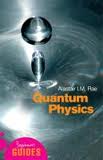In 1981, Richard Feynman, probably the most famous physicist of his time asked the question: “Can we simulate physics on a computer?” At the time the answer was “theoretically yes,” but practically not at that time. Today, we may be on the verge of answering “yes” in practice to Feynman’s original question. Quantum computers operate in such a strange way and are so radically different from today’s computers that it requires some understanding of quantum mechanics and bizarre properties like “quantum entanglement.” Quantum computers are in a realm orders of magnitude beyond today’s supercomputers. Their application in specific computational problems like cryptography, Big Data analysis, computational fluid dynamics (CFD), and sub-atomic physics will change our World. Canadian quantum computing company, D-Wave Systems has been at the center of Google’s efforts to pioneer this technology.
Reblogged from New Scientist
Google’s Quantum Dream May Be Just Around the Corner
31 August 2016
Revealed: Google’s plan for quantum computer supremacy
The field of quantum computing is undergoing a rapid shake-up, and engineers at Google have quietly set out a plan to dominate
SOMEWHERE in California, Google is building a device that will usher in a new era for computing. It’s a quantum computer, the largest ever made, designed to prove once and for all that machines exploiting exotic physics can outperform the world’s top supercomputers.
And New Scientist has learned it could be ready sooner than anyone expected – perhaps even by the end of next year.
The quantum computing revolution has been a long time coming. In the 1980s, theorists realised that a computer based on quantum mechanics had the potential to vastly outperform ordinary, or classical, computers at certain tasks. But building one was another matter. Only recently has a quantum computer that can beat a classical one gone from a lab curiosity to something that could actually happen. Google wants to create the first.
The firm’s plans are secretive, and Google declined to comment for this article. But researchers contacted by New Scientist all believe it is on the cusp of a breakthrough, following presentations at conferences and private meetings.
“They are definitely the world leaders now, there is no doubt about it,” says Simon Devitt at the RIKEN Center for Emergent Matter Science in Japan. “It’s Google’s to lose. If Google’s not the group that does it, then something has gone wrong.”
We have had a glimpse of Google’s intentions. Last month, its engineers quietly published a paper detailing their plans (arxiv.org/abs/1608.00263). Their goal, audaciously named quantum supremacy, is to build the first quantum computer capable of performing a task no classical computer can.
“It’s a blueprint for what they’re planning to do in the next couple of years,” says Scott Aaronson at the University of Texas at Austin, who has discussed the plans with the team.
So how will they do it? Quantum computers process data as quantum bits, or qubits. Unlike classical bits, these can store a mixture of both 0 and 1 at the same time, thanks to the principle of quantum superposition. It’s this potential that gives quantum computers the edge at certain problems, like factoring large numbers. But ordinary computers are also pretty good at such tasks. Showing quantum computers are better would require thousands of qubits, which is far beyond our current technical ability.
Instead, Google wants to claim the prize with just 50 qubits. That’s still an ambitious goal – publicly, they have only announced a 9-qubit computer – but one within reach.
“It’s Google’s to lose. If Google’s not the group that does it, then something has gone wrong“
To help it succeed, Google has brought the fight to quantum’s home turf. It is focusing on a problem that is fiendishly difficult for ordinary computers but that a quantum computer will do naturally: simulating the behaviour of a random arrangement of quantum circuits.
Any small variation in the input into those quantum circuits can produce a massively different output, so it’s difficult for the classical computer to cheat with approximations to simplify the problem. “They’re doing a quantum version of chaos,” says Devitt. “The output is essentially random, so you have to compute everything.”
To push classical computing to the limit, Google turned to Edison, one of the most advanced supercomputers in the world, housed at the US National Energy Research Scientific Computing Center. Google had it simulate the behaviour of quantum circuits on increasingly larger grids of qubits, up to a 6 × 7 grid of 42 qubits.
This computation is difficult because as the grid size increases, the amount of memory needed to store everything balloons rapidly. A 6 × 4 grid needed just 268 megabytes, less than found in your average smartphone. The 6 × 7 grid demanded 70 terabytes, roughly 10,000 times that of a high-end PC.
Google stopped there because going to the next size up is currently impossible: a 48-qubit grid would require 2.252 petabytes of memory, almost double that of the top supercomputer in the world. If Google can solve the problem with a 50-qubit quantum computer, it will have beaten every other computer in existence.
Eyes on the prize
By setting out this clear test, Google hopes to avoid the problems that have plagued previous claims of quantum computers outperforming ordinary ones – including some made by Google.
Last year, the firm announced it had solved certain problems 100 million times faster than a classical computer by using a D-Wave quantum computer, a commercially available device with a controversial history. Experts immediately dismissed the results, saying they weren’t a fair comparison.
Google purchased its D-Wave computer in 2013 to figure out whether it could be used to improve search results and artificial intelligence. The following year, the firm hired John Martinis at the University of California, Santa Barbara, to design its own superconducting qubits. “His qubits are way higher quality,” says Aaronson.
It’s Martinis and colleagues who are now attempting to achieve quantum supremacy with 50 qubits, and many believe they will get there soon. “I think this is achievable within two or three years,” says Matthias Troyer at the Swiss Federal Institute of Technology in Zurich. “They’ve showed concrete steps on how they will do it.”
Martinis and colleagues have discussed a number of timelines for reaching this milestone, says Devitt. The earliest is by the end of this year, but that is unlikely. “I’m going to be optimistic and say maybe at the end of next year,” he says. “If they get it done even within the next five years, that will be a tremendous leap forward.”
The first successful quantum supremacy experiment won’t give us computers capable of solving any problem imaginable – based on current theory, those will need to be much larger machines. But having a working, small computer could drive innovation, or augment existing computers, making it the start of a new era.
Aaronson compares it to the first self-sustaining nuclear reaction, achieved by the Manhattan project in Chicago in 1942. “It might be a thing that causes people to say, if we want a full-scalable quantum computer, let’s talk numbers: how many billions of dollars?” he says.
Solving the challenges of building a 50-qubit device will prepare Google to construct something bigger. “It’s absolutely progress to building a fully scalable machine,” says Ian Walmsley at the University of Oxford.
For quantum computers to be truly useful in the long run, we will also need robust quantum error correction, a technique to mitigate the fragility of quantum states. Martinis and others are already working on this, but it will take longer than achieving quantum supremacy.
Still, achieving supremacy won’t be dismissed.
“Once a system hits quantum supremacy and is showing clear scale-up behaviour, it will be a flare in the sky to the private sector,” says Devitt. “It’s ready to move out of the labs.”
“The field is moving much faster than expected,” says Troyer. “It’s time to move quantum computing from science to engineering and really build devices.”







